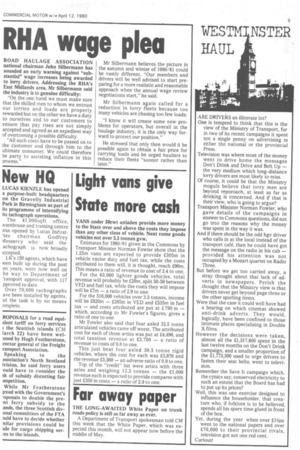Light vans give State more cash
Page 7

If you've noticed an error in this article please click here to report it so we can fix it.
VANS under 30cwt unladen provide more money to the State over and above the costs they impose than any other class of vehicle. Next come goods vehicles not over 3.5 tonnes gvw.
Estimates for 1980/81 given in the Commons by Transport Minister Norman Fowler show that the 1.25m vans are expected to provide £305m in vehicle excise duty and fuel tax, while the costs attributed to them will, it is thought, reach £90m. This means a ratio of revenue to cost of 3.4 to one.
For the 63,000 lighter goods vehicles, total revenue will probably be £20m, split 50-50 between VED and fuel tax, while the costs they will impose will be £7m — a ratio of 2.9 to one.
For the 516,000 vehicles over 3.5 tonnes, income will be £820m — £285m in VED and £535m in fuel tax — and costs attributed are put at £ 790 m — which, according to Mr Fowler's figures, gives a ratio of one to one.
Mr Fowler also said that four axled 32.5 tonne articulated vehicles came off worst. The attributed cost for each of these artics was put at £4,490, and total taxation revenue at £3,700 — a ratio of revenue to costs of 0.8 to one.
This just beat four axled 30.5 tonne rigid vehicles, where the cost for each was £3,970 and the revenue £3,560 — an adverse ratio of 0.9 to one.
Top of the "credit" list were artics with three axles and weighing 12.5 tonnes — the £1,000 revenue each is expected to provide compares with just £350 in costs — a ratio of 2.9 to one.
















































































